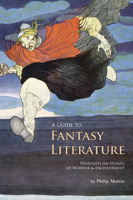Is Harry Potter a decent person?
Okay, we all know that the Harry Potter series by J.K. Rowling has been the subject of Christian concern, some criticism, and occasional outright attempts at banning by certain factions.
On that subject, I enjoyed reading and recommend to you this article:
Harry Potter vs. Gandalf: An in-depth analysis of the literary use of magic in the works of J. K. Rowling, J. R. R. Tolkien, and C. S. Lewis
A booklet-length essay by Steven D. Greydanus
The piece is posted on DecentFilms.com, a site of “film appreciation, information, and criticism informed by Christian faith.” It’s run by Mr. Greydanus, film critic for the National Catholic Register. He also writes for Christianity Today Movies and Our Sunday Visitor.
The (long) article compares Harry Potter to C.S Lewis, Tolkien, and modern occult-based stories like the Buffy series, The Craft, etc.
What, then, defines morally acceptable use of good magic in fiction? Where, and how, do we draw the line? How do we distinguish the truly worthwhile (Tolkien and Lewis), the basically harmless (Glinda, Cinderella’s fairy godmother), and the problematic or objectionable (“Buffy,” The Craft)? And where on this continuum does Harry Potter really fall?
The article is fascinating, well-informed, and well-nuanced. Worth reading!
It’s particularly interesting as Greydanus looks at the cautionary limits to magic (what he calls “Seven Hedges”) that Tolkien and C.S. Lewis implanted in their works, as essentially Christian writers. These “hedges” are:
seven specific literary characteristics common to Tolkien’s and Lewis’s fiction — above and beyond the fantasy nature of the magic itself — that have the net effect of limiting and restricting the role of magic in their fantasy worlds, essentially acting as barricades or hedges between magic and the reader, in effect saying: “Magic is not for the likes of us.”
The “hedges” that Greydanus outlines and then examines are things like how open or secret the magic is (more secret in Rowling’s fictional world, less in Tolkien’s or Lewis’s); how central the role of magic is to the main events; how dangerous or corrupting to the users; how much the acquisition of magic is portrayed as a practical process rather than a mysterious one; and so on.
It’s an interesting look at the use of magic in fantasy fiction. I don’t agree with all his assumptions about which is better or worse, but I found the analysis interesting.
Greydanus concludes fairly reasonably that Potter books have fewer “hedges,” and could be “potentially problematic” . . . but probably aren’t. “The key,” he says rather fairly, “in my judgment, is balance and context. ”
. . . [It isn’t necessary to rewrite who God is in order to imagine a world, like Narnia or Middle-earth, in which the order of creation includes powerful forces, good or neutral in themselves, that some inhabitants of that world are able to engage or control by means of such paraphernalia as incantations or wands — some using this power for good, lawfully, while others for ill, unlawfully.
And this is in fact what’s going on in Tolkien and Lewis, not to mention The Wizard of Oz, Cinderella . . . and J. K. Rowling’s Harry Potter stories.
While the article is well-nuanced, I don’t agree in particular with his view of dark fantasy. He tends to object to the dark fantasy of works like Buffy the Vampire Slayer or The Craft as bad because they are realistic enough to possibly encourage young readers to consider dabbling in actual occult practice. He differentiates between “séances vs. flying broomsticks” (with the latter, or similar magic found in Hogwarts, Narnia, and Middle-earth, being so imaginary as to be impossible and unrewarding to try to implement in real life.)
As I discuss in my own book, A Guide to Fantasy Literature: Thoughts on Stories of Wonder and Enchantment, in a chapter titled “Types of Fantasy: Five Rings of Tradition,” dark fantasy and high fantasy are to great degree just different styles of a common genre, with their own interests and approaches. That doesn’t mean that they necessarily believe in different standards of good and evil.
Although some may not see it, dark fantasy doesn’t embrace evil things as good; they are more often just cautionary, scary, often humorous tales. Yes, they focus on those dark powers – their allure and sheer power to scare and grab us . . . physically, emotionally, psychically – and our primal fears of all things dark and different. (Of course, the best dark-fantasy authors do that with more more insight than the hacks in the field . . . as is also true of high fantasy and its weaker vs. stronger works.)
And yes, for fictional power, dark fantasy typically adopts a realistic setting, which high fantasy doesn’t as often.
With dark fantasy, you need to understand the humor and practical catharsis (literally, a purging) implicit in the genre. Stephen King isn’t an evil person. And the Twilight Saga examines issues of real significance (romance, physical attraction, morality, abstinence), in an interesting, fictional way.
And I’ll point out that a blind swallowing of all aspects of high fantasy can lead to a weakness of insight about how easy it is to split the world into black and white, and how goodness will always triumph through conviction and pluckiness and persistence.
In his article, Greydanus concludes:
For my part, I don’t see any one hard and fast answer: no one line in the sand, no one litmus test capable of distinguishing all acceptable uses of good magic in fiction from all unacceptable ones.
I agree with that statement!
(Blog post on the Creeping Past Dragons blog by Philip Martin, director of Great Lakes Literary and author of A Guide to Fantasy Literature.)
